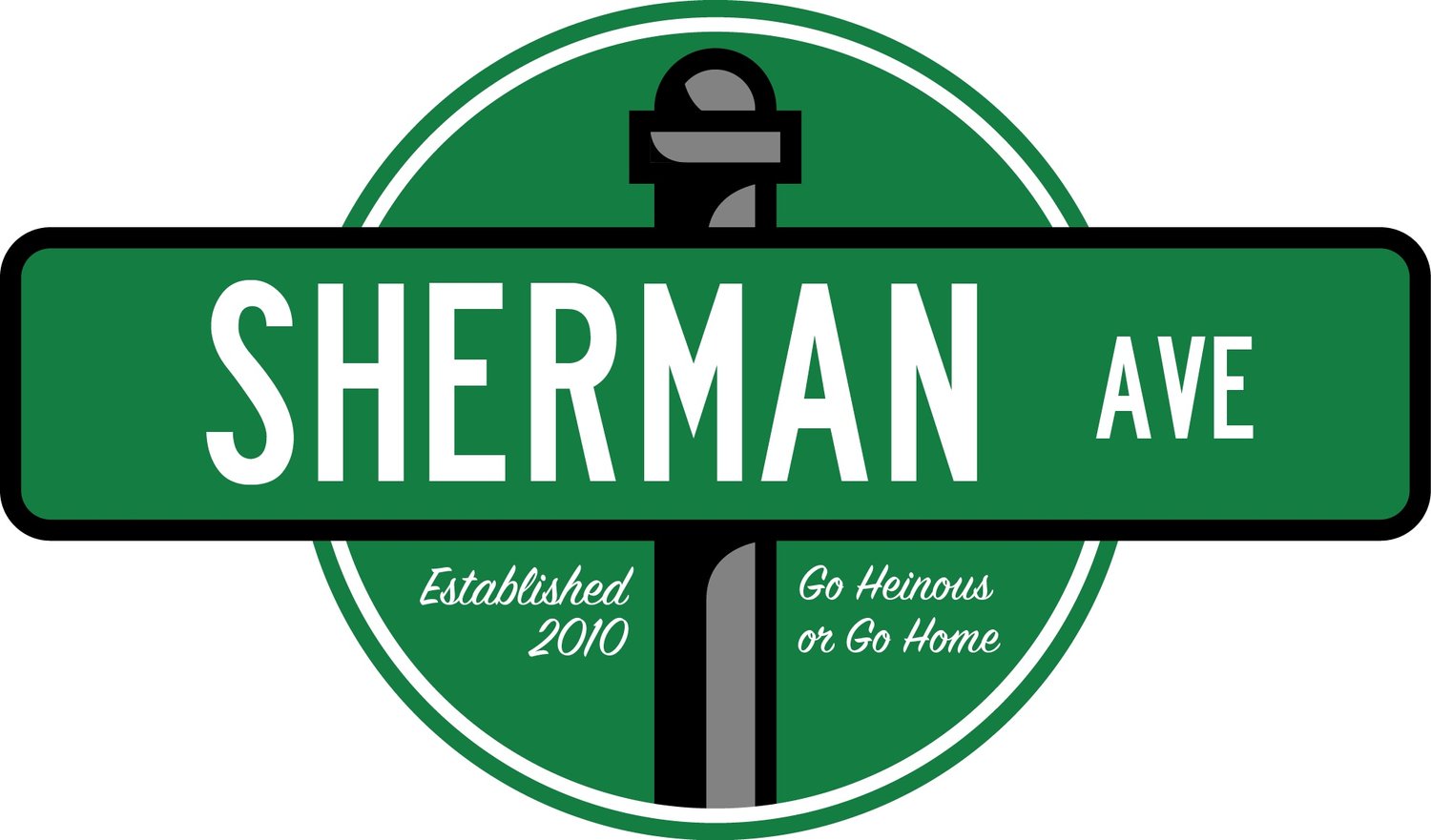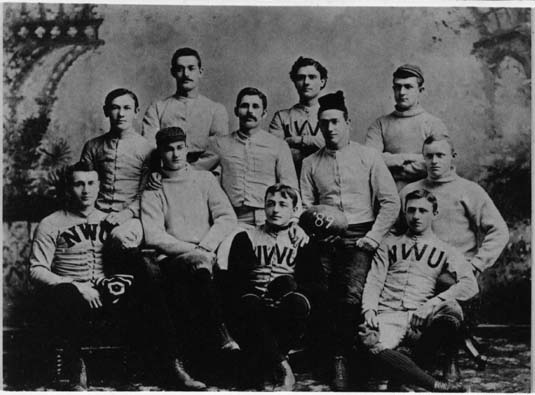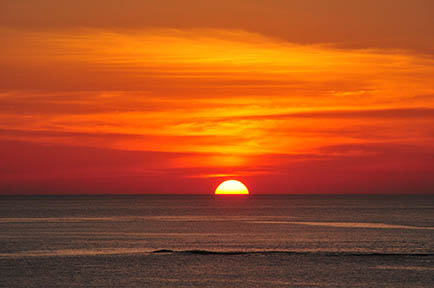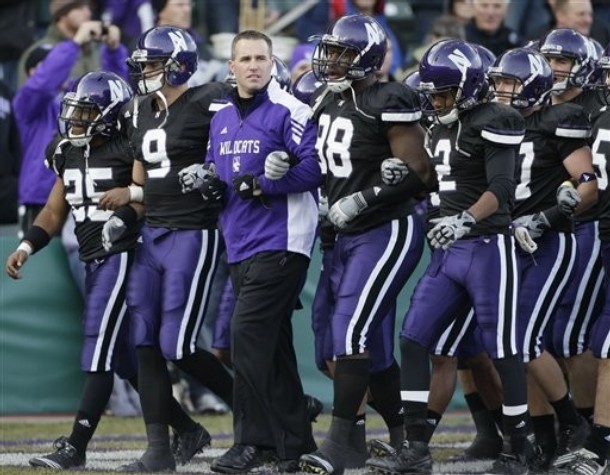A Brief, Mostly Accurate History of Northwestern Football
It’s football season again in Evanston. Long known as the Mecca of Mediocrity, Northwestern has managed to field some pretty talented teams for the last half decade, making a bowl game in five of the last six years, winning one, and even being featured on College Gameday in the first half of last season. Not half bad. In fact, technically speaking, they’ve been just under half bad, with a 98-84 record since the turn of the century. Older alumni will be quick to point out that those who bemoaned last year’s 5-7 season have nothing to complain about, and they would be completely right. A student at Northwestern in the late-1970s would have been lucky to see five wins in their entire time at Northwestern. And by “would have been lucky to see five wins”, what I mean is that they wouldn’t have seen five wins, because Northwestern didn’t have five wins between 1976-1981, they had three.
1882-1895: Humble Beginnings
In 1882, at which point football apparently already existed, a group of Northwestern students formed an intercollegiate team to compete in their first “season”, playing in two games in their first year. Then, in 1886, they competed in a single game, going 0-1 in their second season/game. The yet-to-be-named Wildcats fought hard, however, and steadily improved under the stern guidance of “No Coach”, ending their 1890 season with a 4-1-1 record. In 1891, the team decided to do away with “No Coach” (who, despite not existing, had amassed a better winning percentage than over half of Northwestern’s future existent coaches) in favor of a twenty-three year old named Knowlton “Snakes” Ames. There’s a lot to unpack there, but not a lot to unpack about Snakes’ short-lived coaching tenure. He was one of six coaches for Northwestern over what I assume was a pretty forgettable eight-year period because: a) there were six coaches in eight years, b) football was pretty forgettable in the 1890s, and c) everything was pretty forgettable in the 1890s. Seriously, try to name one thing that happened in the 1890s.
1896-1948: A Fifty Year Climb Towards A Fifty Year Decline
In 1895, Northwestern joined the “Western Conference”, which was pretty telling of how long ago this was. Some relatively non-eventful decades followed, peppered with a few coaching greats such as Charles “Doc” Hollister, Marquis “Bill” Horr, Glenn “Franklin” Thistlethwaite, Edgar “Dick” Hanley and Lynn “Pappy” Waldorf—because god forbid that anyone just go by their first name. How do you even get to “Bill” from “Marquis”? Early highlights from the era include Northwestern setting up an actual committee to investigate what was wrong with their football program after their 1921 season and the opening of Ryan Field in 1926. It would be unfair to not mention that Pappy’s coaching career was actually wildly successful, including five seasons with Top 25 finishes and a 7-1 1936 season which earned first place in the Western Conference. His tenure even included the 1938 recruitment of future NFL running back William “Bill” DeCorrevont, which I understand is a pretty standard nickname, but for fucks sake, can anyone just go by their first name?
All of this was of course nothing more than a five decade build-up for Northwestern’s matchup against Cal in the 1949 Rose Bowl. Led by coach Robert Voigts, as well as stars Frank Aschenbrenner and Art Murakowski, Northwestern won the game 20-14 for its first and only Rose Bowl victory. If you’re wondering how the Rose Bowl existed before the Big Ten existed it’s because, in a surprise twist, the Western Conference was actually a precursor to the Big Nine Conference, which would later become the Big Ten Conference. If you’re wondering who the tenth team was that forced the name change, you can look that up on your own.
1949-1994: The Aforementioned Fifty Year Decline
So it was that Big Nine champion Northwestern would take the victory in 1949, if only because you need to have a taste of victory to truly understand the sting of defeat. Just six seasons later, in 1955, Rose Bowl-winning coach Robert Voigts was pressured into retirement following a 2-7 season, as apparently everyone involved seemed to be thinking along the lines of, “hey, how much worse could it get?” Needless to say, they would never make the mistake of asking that question again. Through the next forty years, Northwestern would finish only one season in the Top 25. The 1955 season, the third in the newly established Big Ten Conference, resulted in Northwestern’s first, but certainly not last, winless campaign, a feat accomplished again just two years later.
The next twenty years, under head coaches Ara Parseghian and Alex Agase were, though unspectacular, nothing to complain about. It was 1972 that began, as none other than Wikipedia aptly describes, the “Years of Futility". It was during these years that the Mount Rushmore of abysmal Northwestern coaches: John Pont, Rick Venturi, Dennis Green and Francis Peay—with all due respect to their other accomplishments—put up what could only be described one of the worst twenty year stretches in the history of D1 college football.
After a few relatively successful seasons, John Pont got the ball rolling with two consecutive 1-10 campaigns in 1976 and 1977 before inexplicably becoming Northwestern’s Athletic Director. The details of this are a little fuzzy, but he appears to have been promoted. And it’s clear he had an eye for talent, because his first hire was new coach Rick Venturi, who went 1-31-1 in three years as head coach. For some reason—perhaps because they remembered the disastrous ouster of Rose Bowl-winning coach Robert Voigts, or perhaps because new Athletic Director Pont saw a little of himself in the kid—Venturi was not fired after his 0-10-1 debut campaign. Nor was he fired his 1-10 second season, the lone victory apparently being sufficient to stave off his departure for another year. In fact, it was the only win in a four year span for the Wildcats, an event so exciting that victory-deprived students rushed the field afterwards. After another winless season in 1980, both master and disciple were dismissed as Northwestern fired both Athletic Director Pont and Coach Venturi. Unfortunately, this would not stop the bleeding.
The Wildcats brought in Dennis Green, who would later go on to have a very successful career with the Minnesota Vikings, which would then subsequently be overshadowed by his post-game press conference meltdown against the Bears in 2006.
Coach Green led the Wildcats to another 0-11 season, but was not fired, presumably again because of the memory of the Voigts firing. Green would last for four more seasons, even managing to rack up three wins at one point. Later, Francis Peay served six years as the Northwestern head coach, enough time to rack up a winless season of his own and subsequently avoid being fired because of the Voigts curse. Little did anyone realize that there was hope on the horizon.
1995-2005: The Horizon
“Expect Victory” was the motto of the 1995 Wildcat football team, though not many were inclined to believe it after three losing seasons under new head coach Gary Barnett. Fortunately, Barnett—the patron-saint of Northwestern football—would indeed lead Northwestern to a 10-2 record, a win over #9 Notre Dame, a Big Ten Conference championship, and a Rose Bowl appearance. Although the team—led by running back Darnell Autry, quarterback Steve Schnur and some linebacker named Pat Fitzgerald—would go on to lose to USC in its first bowl game since the 1949 Rose Bowl, Garnett established a winning culture that would last through the following 1996 season.
After a few more seasons and another Bowl Game appearance/defeat in 1996, Garnett would leave Northwestern for a coaching job at the University of Colorado, which was a more lucrative job for some reason. Randy Walker took over and led Northwestern to another shared conference championship, as well as three more Bowl Game appearances. At the end of the 2005 season, Coach Walker died suddenly and tragically of a heart attack.
2006-2013: FitzFitzFitz!
Promoted to head coach in 2006, Coach Pat Fitzgerald built the program for a couple of seasons before leading Northwestern back to a bowl game in 2008. This would be the first of four straight bowl game appearances between 2008 and 2011. This would also be the first of four straight bowl game defeats between 2008 and 2011. However, the program grew ever stronger, with stars such as Dan Persa, Kain Colter, Venric Mark and Stefan Demos leading the way. In 2012, despite a few tough last-minute losses, Northwestern finished 10-3 and came away with a victory at the Taxslayer.com Gator Bowl—their first bowl game win since the 1949 Rose Bowl.
Hoping to capture on the momentum from the 2012 season, the ‘Cats geared up for a highly anticipated run in 2013. After victories against Cal, Syracuse, Western Michigan and Maine, their ranking climbed to #16, setting the stage for a showdown with also-undefeated Ohio State. On top of everything, the game was selected for ESPN’s College Gameday, adding to the excitement around campus.
The nationally televised game featured a packed Ryan Field and a back and forth battle. Ohio State struck first with a field goal, but Northwestern fought back with a Kain Colter touchdown. The sides exchanged scores, going into halftime with a 20-13 Northwestern lead. After an Ohio State touchdown to end the third quarter, and another on a Carlos Hyde, Ohio State led 27-23. Northwestern completed a thrilling pass to the end zone that put them up 30-27 with 9:10 to go. What a great season. Go ‘Cats!









